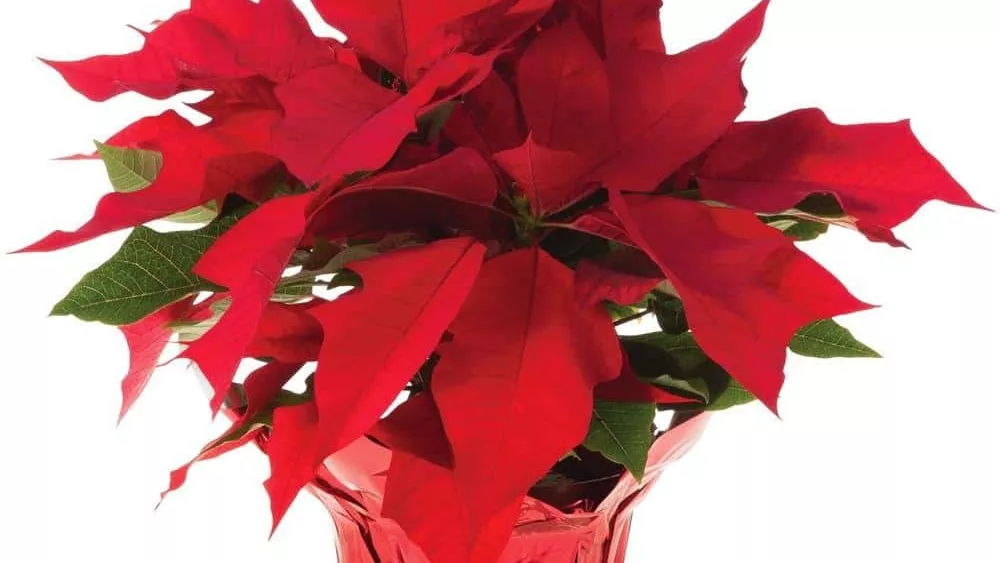Kelly Jackson
Christian County Extension Office
Caring for Holiday Flowers
Blooming plants make a perfect holiday gift. However, sometimes even avid gardeners have questions on how to properly care for their new houseplant, especially the exotic specimens. Generally speaking, most species do best in a location with a lot of natural light. They prefer temperatures between 55 and 65 degrees and would do best with higher humidity, such as found in kitchens or bathrooms. Most of these plants don’t need fertilizer while they are blooming. Keeping plants and encouraging re-blooming is a difficult task and the results are often less favorable than the pampered, greenhouse plants available during the season. Amaryllis and Christmas Cactus however are exceptions to the rule and, with some effort, are fairly easy to overwinter and re-bloom.
Water requirements and other needs for specific holiday plants are listed below so you can a great success with your new blooming plant.
- Amaryllis – These oversized bulbs explode with large red, white, pink, or orange lily-like flowers on a 1 to 2 foot stalk. They will need a sunny, warm location (temperatures above 60F). High light intensity will strengthen the stalk and keep the plant from tipping over. Remove the blossoms as they fade and keep the soil evenly moist.
- Christmas Cactus – To encourage its’ brilliant flowers, place your Christmas Cactus in full sun during the winter and fertilize every two weeks (at half strength during bloom). Cacti are damaged most often by over-watering, so let the soil dry out between times.
- Christmas Peppers – This plant produces a profusion of multicolored peppers in yellow, orange, and red. The fruit is edible but extremely hot. Keep it away from children and pets. Discard this plant after the peppers drop.
- Cineraria – This flowering plant covers itself with red, lavender, or white daisy-like flowers. It should be kept cool (between 55 and 40 degrees). It likes bright, indirect light and the soil should be kept moist and never allowed to dry out completely.
- Cyclamen – This plant does not tolerate warm temperatures. Keep in a cool room between 55 to 60 degrees in bright, indirect light. Keep soil moist but not wet. It’s better to water them in the morning so the excess can evaporate off the crown to avoid crown rot.
- Gloxinias – These low-growing, potted plants produce velvety flowers of purple, pink, and white for up to 3 to 4 weeks. Like their African violet relative, gloxinias need specific care. Avoid high-intensity sunlight and cold or hot drafts, and avoid water on the leaves. Water plants from the saucer with warm water instead of overhead irrigation.
- Jerusalem Cherry – This colorful plant is grown for its bright, orange-red berries that stay for months. The berries are not really cherries nor are they edible, so use caution around children. They prefer bright, indirect light and cool temperatures (50-68F). Berries will persist for many months but will drop if light is poor. Let the soil dry out between watering and fertilize monthly to encourage a longer life span.
- Kalanchoe – This is the perfect plant for someone who kills everything. An average climate is fine for this plant with the minimum night temperature of 50 degrees. Bright, indirect light or full sun is best. The soil can be allowed to dry out between watering. No fertilizer is needed while the Kalanchoe is in flower.
- Pocketbook Plant – This unusual plant has slipper-shaped flowers in brilliant reds, bronzes, and yellows. Keep this plant in a cool room with a minimum night temperature of 40 degrees. It loves bright, indirect light but not full sun. Allow the soil to dry out between watering, but do not let the foliage wilt.
- Poinsettias – These traditional holiday plants prefer sunny spots and hate cold drafts from doors or excess heat from TV’s or heating ducts. Keep poinsettias at temperatures between 50 and 70 degrees and water only when the soil surface is dry to the touch. Poinsettias should continue ‘blooming’ for two to three months. Although they can be overwintered the resulting plant will rarely looks as full as one you can buy.






